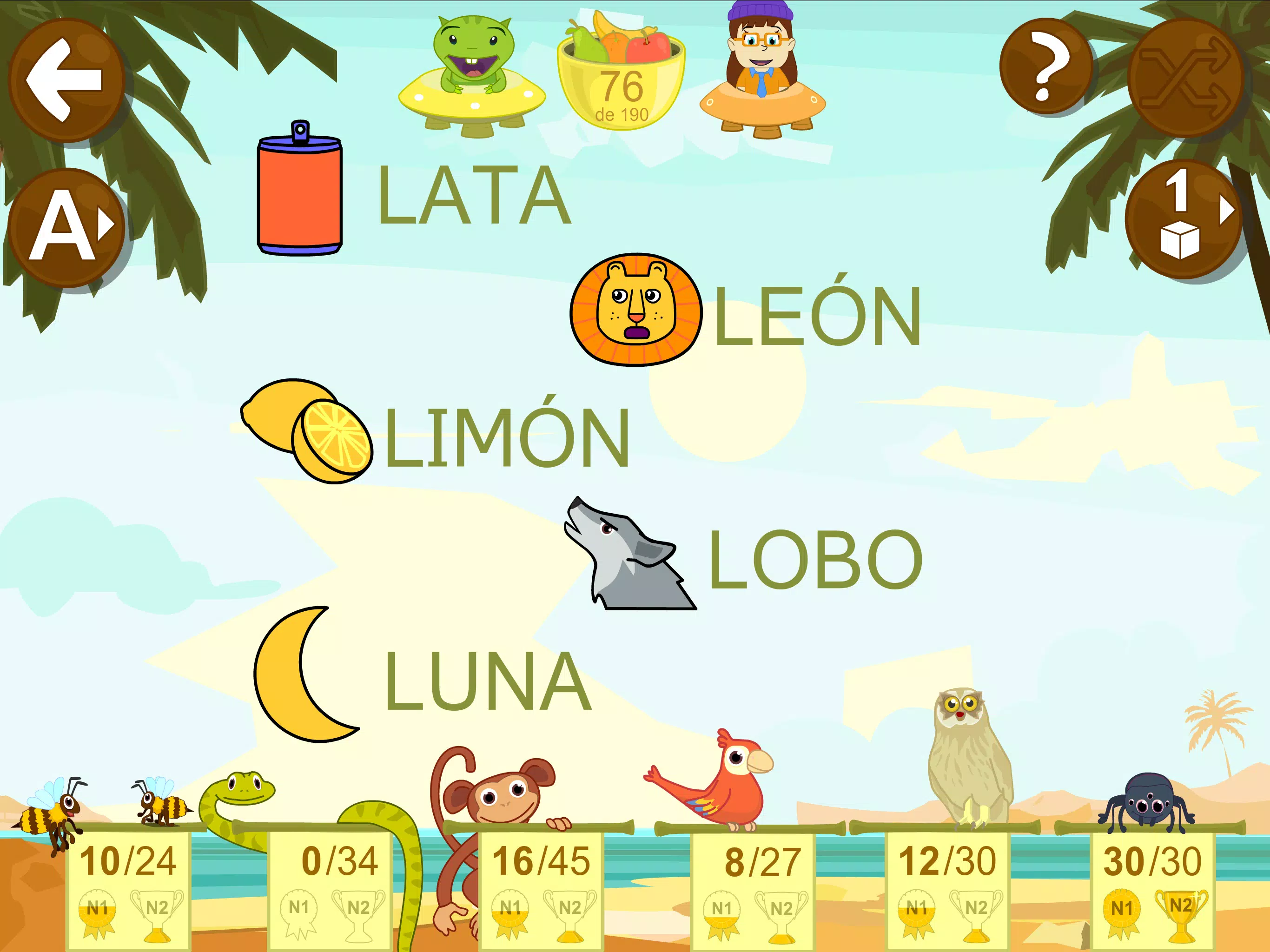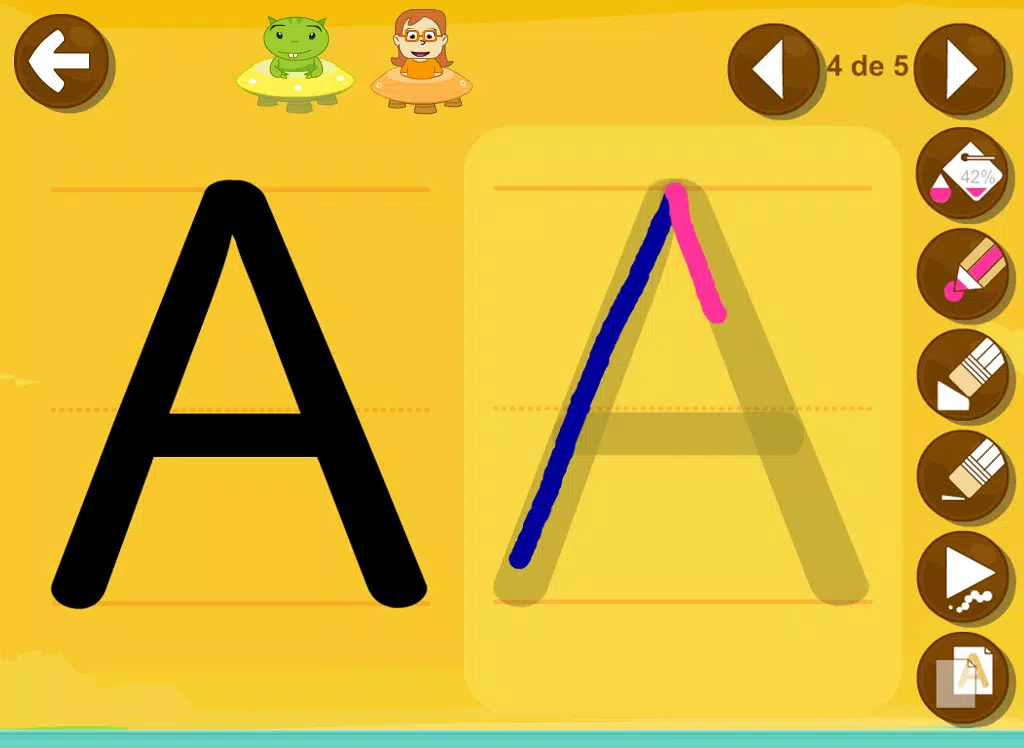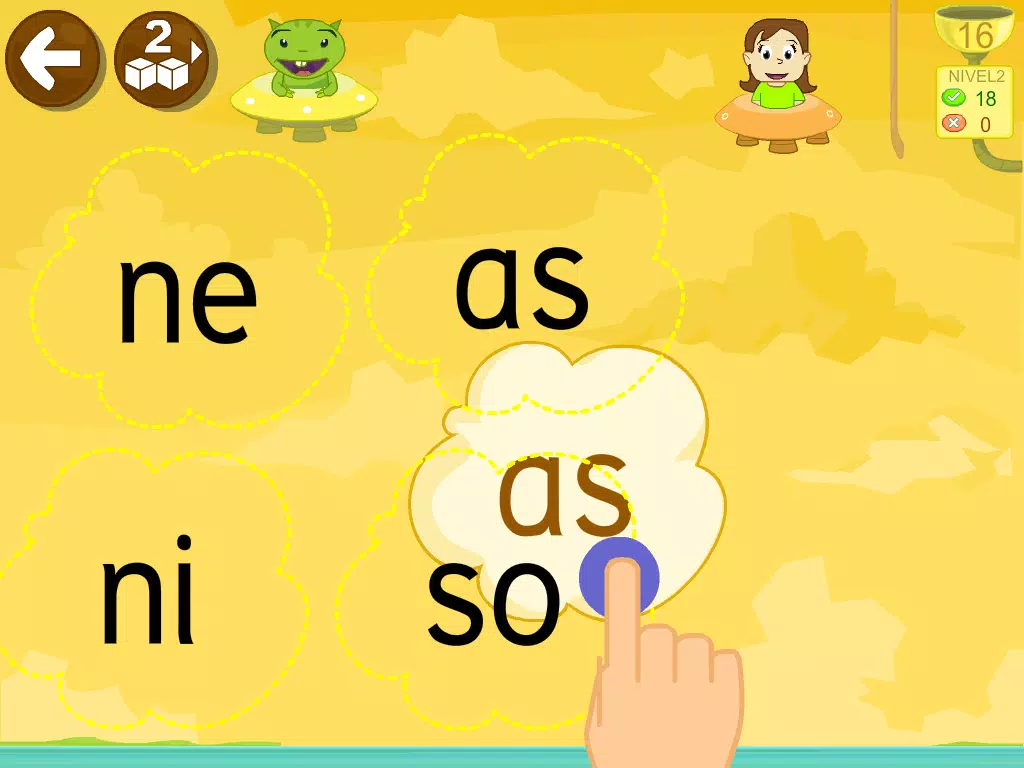Learn to read Spanish
Reading is one of the most crucial skills taught in preschool and the early years of elementary school, serving as the foundation for all future academic and professional endeavors. Given that children today are digital natives with a natural affinity for computers and tablets, leveraging technology can significantly enhance their learning experience, particularly in reinforcing what they are already learning at school.
METHOD
"Learn to Read Spanish with Phonics" is a comprehensive program designed for children aged 3 to 6 or 7, as well as adults looking to improve their pronunciation. The method is structured into a section for tracing letters and 30 progressive lessons, beginning with vowels and moving on to consonants and consonant blends such as L, M, S, T, P, N, D, F, H, C, Q, CH, G, GUE, R, -rr-, B, V, J, GE, GUE, Y, Z, CE, LL, X, and K.
Each lesson includes 11 engaging games, each available in two difficulty levels, making it an ideal resource for parents and educators to practice and introduce the first syllables and words in Spanish. Encourage the child to listen and engage with the exercises, understanding that it's not necessary to comprehend everything immediately.
Learning to read is a gradual process that can span over a year. We recommend daily practice sessions of just a few minutes, periodically revisiting previously learned material, and continuously adjusting the type and level of exercises to suit the learner's pace. It's essential that the learning experience feels like a game.
LEVELS
All games are designed with two difficulty levels, which can be adjusted at any time. Children can progress at their own pace, with the flexibility to pause and resume games later. Successful completion of games rewards children with fruits, adding a fun element to their learning journey.
The first level is suitable for three-year-olds and, with assistance, even younger children. In this level, games can be solved with the help of the instructions. The second level presents more complex challenges, encouraging children to solve them independently while keeping the experience enjoyable.
As parents or guardians, it's crucial to match the difficulty level to the child's abilities without pressuring them to rush through or advance prematurely.
ABILITIES
- Visual and auditory memorization
- Identification and association
- Discrimination
- Understanding
- Literacy
OPTIONS
On the home screen, users can:
- Enable or disable background music
- Play in full screen
Within the Tikis menus, additional customization options include:
- Changing the font to uppercase, lowercase, or cursive handwriting
- Enabling or disabling automatic activity, which automatically switches to another game after a set number of exercises
- Shuffling the syllables to enhance learning
ACHIEVEMENTS
The program allows for the creation of up to three profiles (avatars) for different children, each with a detailed progress tracker showing the number of correct and incorrect answers and a percentage represented by fruits. These fruits serve as a fun motivator, encouraging continued engagement. When fruits are collected, they can be given to little aliens by clicking on the basket.
For a comprehensive overview of progress, users can press the reports button on the Tikis screen.
GAMES
NEW THE ALPHABET:
Children can listen and learn to write each letter of the alphabet, syllables, and some words in various modes including trace, copy, and free mode. They can choose between three types of letters: uppercase, lowercase, and handwriting.
Each lesson features 11 interactive games:
- DOLPHIN: Introduction to the word and its components.
- BALLOONS: Letter identification within a syllable.
- CLOUDS: Tracing the shape of each syllable.
- CRABS: Syllable formation from letters.
- BUTTERFLIES: Syllable identification.
- BEES: Identifying the initial syllable of words.
- SNAKE: Word formation using syllables.
- MONKEYS: Word formation from letters.
- PARROTS: Word recognition and reading.
- MOUSE: Sequencing words and reading sentences.
- SNAILS: Sentence formation from words.
For any feedback or technical queries, please contact [email protected].
Learn to read Spanish
Reading is one of the most crucial skills taught in preschool and the early years of elementary school, serving as the foundation for all future academic and professional endeavors. Given that children today are digital natives with a natural affinity for computers and tablets, leveraging technology can significantly enhance their learning experience, particularly in reinforcing what they are already learning at school.
METHOD
"Learn to Read Spanish with Phonics" is a comprehensive program designed for children aged 3 to 6 or 7, as well as adults looking to improve their pronunciation. The method is structured into a section for tracing letters and 30 progressive lessons, beginning with vowels and moving on to consonants and consonant blends such as L, M, S, T, P, N, D, F, H, C, Q, CH, G, GUE, R, -rr-, B, V, J, GE, GUE, Y, Z, CE, LL, X, and K.
Each lesson includes 11 engaging games, each available in two difficulty levels, making it an ideal resource for parents and educators to practice and introduce the first syllables and words in Spanish. Encourage the child to listen and engage with the exercises, understanding that it's not necessary to comprehend everything immediately.
Learning to read is a gradual process that can span over a year. We recommend daily practice sessions of just a few minutes, periodically revisiting previously learned material, and continuously adjusting the type and level of exercises to suit the learner's pace. It's essential that the learning experience feels like a game.
LEVELS
All games are designed with two difficulty levels, which can be adjusted at any time. Children can progress at their own pace, with the flexibility to pause and resume games later. Successful completion of games rewards children with fruits, adding a fun element to their learning journey.
The first level is suitable for three-year-olds and, with assistance, even younger children. In this level, games can be solved with the help of the instructions. The second level presents more complex challenges, encouraging children to solve them independently while keeping the experience enjoyable.
As parents or guardians, it's crucial to match the difficulty level to the child's abilities without pressuring them to rush through or advance prematurely.
ABILITIES
- Visual and auditory memorization
- Identification and association
- Discrimination
- Understanding
- Literacy
OPTIONS
On the home screen, users can:
- Enable or disable background music
- Play in full screen
Within the Tikis menus, additional customization options include:
- Changing the font to uppercase, lowercase, or cursive handwriting
- Enabling or disabling automatic activity, which automatically switches to another game after a set number of exercises
- Shuffling the syllables to enhance learning
ACHIEVEMENTS
The program allows for the creation of up to three profiles (avatars) for different children, each with a detailed progress tracker showing the number of correct and incorrect answers and a percentage represented by fruits. These fruits serve as a fun motivator, encouraging continued engagement. When fruits are collected, they can be given to little aliens by clicking on the basket.
For a comprehensive overview of progress, users can press the reports button on the Tikis screen.
GAMES
NEW THE ALPHABET:
Children can listen and learn to write each letter of the alphabet, syllables, and some words in various modes including trace, copy, and free mode. They can choose between three types of letters: uppercase, lowercase, and handwriting.
Each lesson features 11 interactive games:
- DOLPHIN: Introduction to the word and its components.
- BALLOONS: Letter identification within a syllable.
- CLOUDS: Tracing the shape of each syllable.
- CRABS: Syllable formation from letters.
- BUTTERFLIES: Syllable identification.
- BEES: Identifying the initial syllable of words.
- SNAKE: Word formation using syllables.
- MONKEYS: Word formation from letters.
- PARROTS: Word recognition and reading.
- MOUSE: Sequencing words and reading sentences.
- SNAILS: Sentence formation from words.
For any feedback or technical queries, please contact [email protected].





